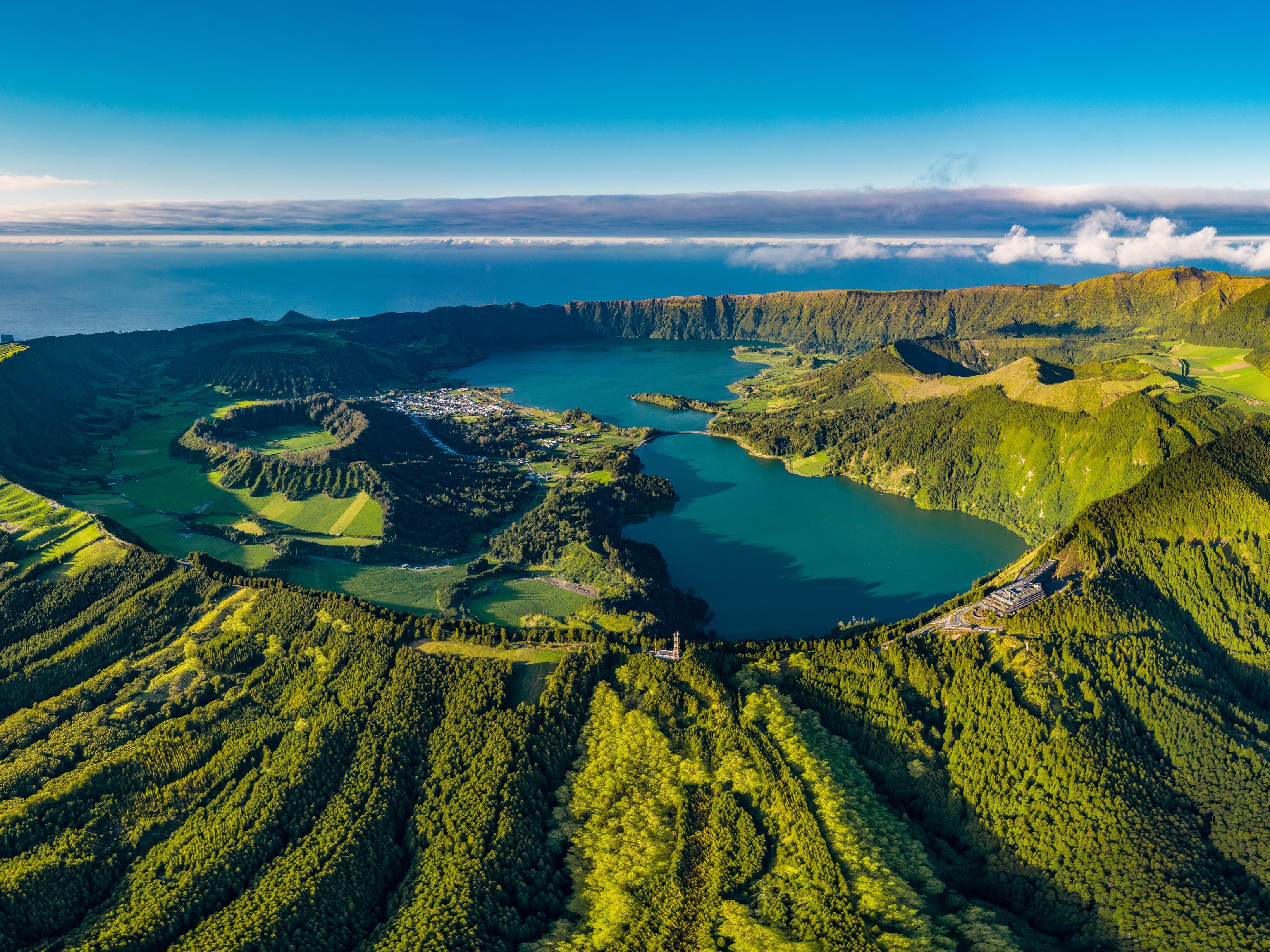
This hiking route explores an untouched wilderness in the Western Balkans
The High Scardus Trail winds through Kosovo, Albania, and North Macedonia, showcasing the staggering beauty of the continent’s least visited mountains and valleys.
The mountain ranges of the Western Balkans hold a part of European history trapped in time. Now, a new long-distance hiking route hopes to share the heritage of this land that was once closed off to the world due to a series of conflicts in the 20th century.
The 225-mile High Scardus Trail traces the borders of Kosovo, Albania, and North Macedonia down to one of the deepest, oldest lakes on the continent. At 9,000 feet, it’s a hazy realm of endless green peaks, dotted with stream-threaded pastures. Many of the paths used today were originally built by Roman caravans in the second century B.C.
Although High Scardus has been years in the making—the idea was conceived in 2016—it’s only now established enough for thru-hikers. The stages are mapped, markers painted, lodges restored, and homes turned into guesthouses. Here’s what you need to know.
The last European wilderness
During the late 20th-century Yugoslav Wars, the ridges of the Western Balkans provided strategic military vantage points. In the subsequent Kosovo conflict (1998-99), landmines were rife across the alpine Kosovo-Albanian border. Kosovo was declared landmine-free in 2001, but still, the mountains were far from tourists’ sights.

Decades later, things are changing. “We want people to know that, yes, Kosovo has a sad and difficult past, but now we’re working hard to become a destination for travelers, to show the world our amazing nature and culture,” says Taulant Hoxha, who was a child in the city of Prizren during the Kosovo War. He now co-owns the mountain guiding service Super Xplorers and was involved in the creation of High Scardus.
Weaving through some of the least visited mountains in Europe, the trail passes through six national parks—two in North Macedonia, one in Kosovo, and three in Albania.
“As it takes in multiple countries and environments, we believe it has the preconditions to become a top hiking trail in Europe and even worldwide,” says Ekrem Hyseni, a project manager for GIZ, an international development arm of the German government that helped develop the route.
(This new trail reveals the wonders of Armenia.)
Completing all 20 stages of the hike with guides is recommended, but would take 20 days. Additionally, each country allows only native citizens to work on the trail, so hikers would need to hire multiple leads throughout the trek.
The trail begins in North Macedonia, at the recently restored Mountain Hut Ljuboten, a 1930s refuge for hikers, located in the petite village of Staro Selo. From here, the route traces the Kosovar/North Macedonian border in the Sharr Mountains, before leading to Brezovica, a ski resort that offers a glimpse of Kosovo’s socialist era. Hikers follow the small trails, often blurred by the moors along the northern flanks of Sharr.


The path continues through plains and plateaus to the summit of Mount Korab (9,029 feet), the highest peak of both Albania and North Macedonia, where semi-nomadic shepherds guarding their livestock from native bears and wolves offer shelter.
(See how these traditional herders still cross the perilous trails of the Caucasus.)
Along the route, guest houses like Sabriu and Korabi in Albania welcome travelers to experience local customs and sample slabs of herb-smothered sheep cheese and raki, a sweet brandy, after a hearty family-style dinner.
The final stage brings hikers through North Macedonia’s Galicica National Park to Sveti Naum, a popular monastery on the shore of Lake Ohrid. The Ohrid region is one of 28 places globally to be granted both UNESCO Natural and Heritage status (for its 1.36 million-year-old lake and the Old Town, one of the world’s oldest human settlements).
Other relics of Western Balkans’ 20th-century history can also be found on the trail, such as former dictator Enver Hoxha’s “nuclear” bunkers across Albania, a machine-gun holder in North Macedonia, and abandoned Soviet-era structures in Kosovo.
Trekking for a sustainable economy
While High Scardus aims to showcase the jewels of the Western Balkans, it’s equally a project of sustainable development. It’s hoped an ecosystem of businesses will emerge, improving the quality of life for locals and giving them reasons to stay.
(Puerto Rico’s stunning new trail traverses a tropical rainforest.)
“We hope that above all, the young population sees their homeland in a new perspective, of which they can be rightly proud,” says Stefan Lieb-Lind, lead trail designer from High Scardus’ consultants the Trail Angels.

Building enthusiasm at the government level is a long-term process. But training programs and grants have helped develop accommodations along the route, and have sparked interest in local stakeholders to invest in the trail’s surrounding rural areas.
“[After] years of planning, selecting trails, making the routes, [and] talking to homeowners and landowners into turning to tourism—now it finally feels like reality,” says Lieb-Lind. “High Scardus is no longer an idea—the wheels are in motion.”
What to know
When to go: The best time to go is mid-June to mid-October. Otherwise, snowfields can block access (except in the lower-altitude stages during early June).
Tours: Several tour companies, such as Shar Outdoors, Elite Travel Albania, and Super Xplorers, offer guided expeditions for multiday treks.




